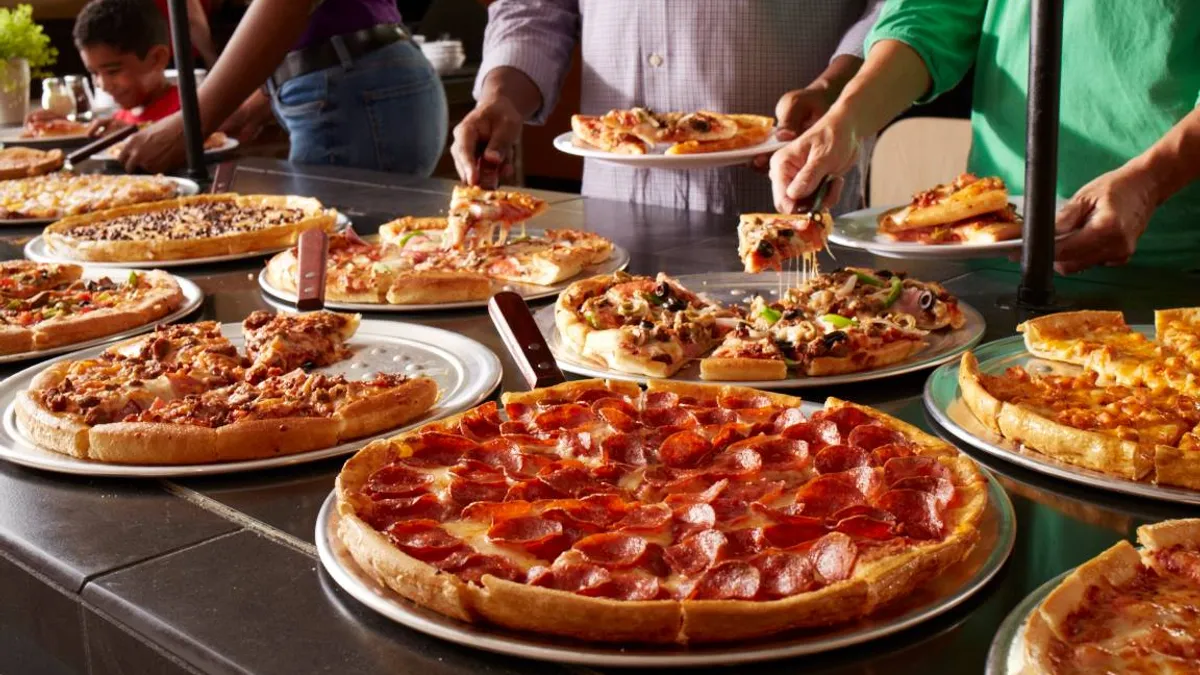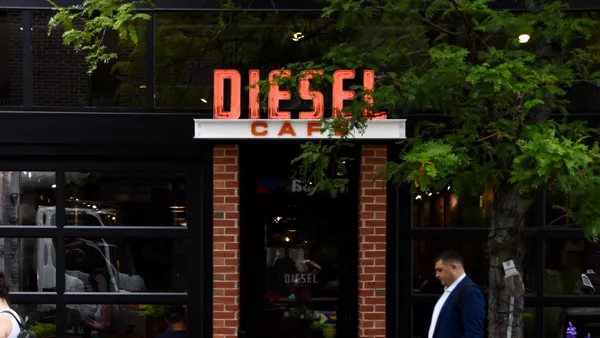Dive Brief:
- RAVE Restaurant Group, parent company of Pizza Inn and Pie Five, reported second-quarter results Wednesday, including a comp sales increase of 0.8% lifted by Pizza Inn’s 2.7% sales jump. Comparatively, Pie Five sales were down 3.6%.
- According to Restaurant Business, Pie Five had about 100 locations two years ago and is now down to 65 due to declining same-store sales of more than 16% during that time.
- RAVE is in the middle of a strategic plan that includes investments in new menu offerings, updated technologies and operational processes, according to a news release. The company plans to add development resources to expand both Pizza Inn and Pie Five, as well as its new concept, PIE (Pizza Inn Express).
Dive Insight:
The swift downturn of Pie Five underscores just how quickly consumer preferences are changing. Once a darling of the fast casual pizza category, the fast casual top-your-own concept continues to struggle after two years of same-store sales declines. Pie Five’s top-your-own, in-store concept is one of many that popped up around 2010 and 2011. Meeting a demand for speedy customization, most of these concepts grew fast.
But now it seems as though speedy convenience ultimately trumps customization. To indulge in a Pie Five pizza means to physically go through the queue line in the store. In an on-demand era fueled by technology and delivery, that’s just not fast enough anymore.
Pie Five's struggle to differentiate is reflective of the challenges facing fast casual industry overall. But that’s not to say RAVE isn’t trying to rectify the brand’s issues. In 2017, Pie Five introduced both online ordering and delivery. Recognizing that consumers are more driven by speed and convenience than ever, RAVE is also focused on a scaled down format, called PIE, which debuted last year. The concept works especially well for franchisees who want to focus on non-traditional locations such as c-stores, airports and universities — locations that tend to cost less.
These models highlight off-premise dining models to — in theory at least — meet consumer demands and drive better unit economics. To navigate fierce competition, flexibility is the name of the game. Pie Five is not alone in this approach. Pizza Hut began shifting its focus to delivery and carryout a few years ago, for example, and is moving away from its Red Roof concepts.
But packaging new — smaller — store formats to meet consumers’ convenience demands doesn’t match the resurgence happening at Pizza Inn, which has been around for more than 60 years. The pendulum at RAVE has swung back to its traditional Pizza Inn concept, with eight consecutive quarters of comp growth. This growth is driven by, among other efforts, the all-day buffet which has driven transactions in off-peak periods, according to Rave president Bob Bafundo. The pizza category is intensely value-driven right now — thanks in large part to market leader Domino’s — so it makes sense that the buffet has become a sales driver. Nothing illustrates value to the consumer more than an all-you-can-eat opportunity and there isn’t a lot of competition in this sub-category.
For operators, buffets mean less waitstaff is needed. With rising labor costs causing a massive headwind in the restaurant industry, this is a very big deal. There are other factors behind the profitability of buffets, including purposefully positioning heavier dishes up front and serving smaller portions, but at their very core, buffets can be successful because of two main factors — value and variety. Pizza Inn is also ensuring that its extensive history doesn’t translate to dated stores. The company’s new store design has yielded 19% sales growth year over year.














